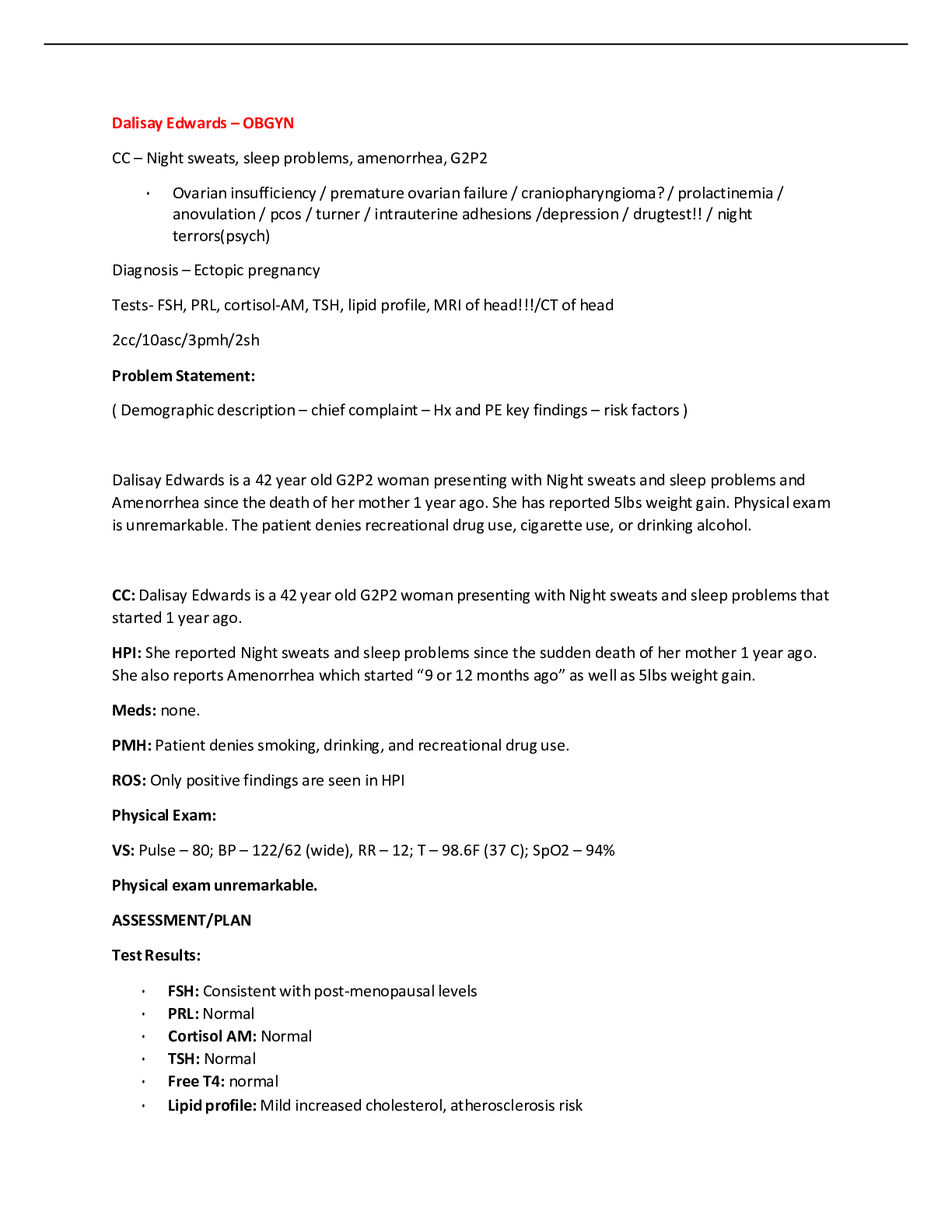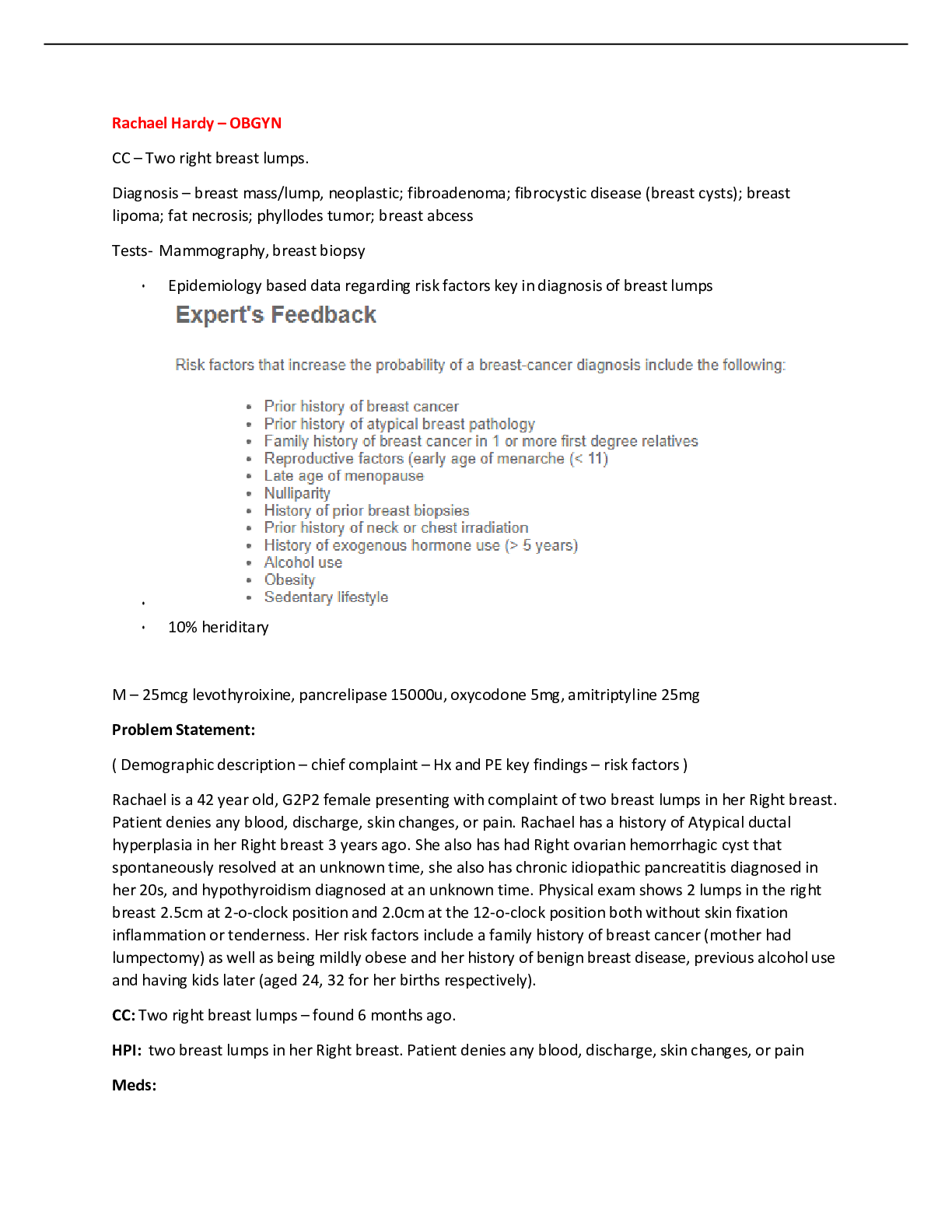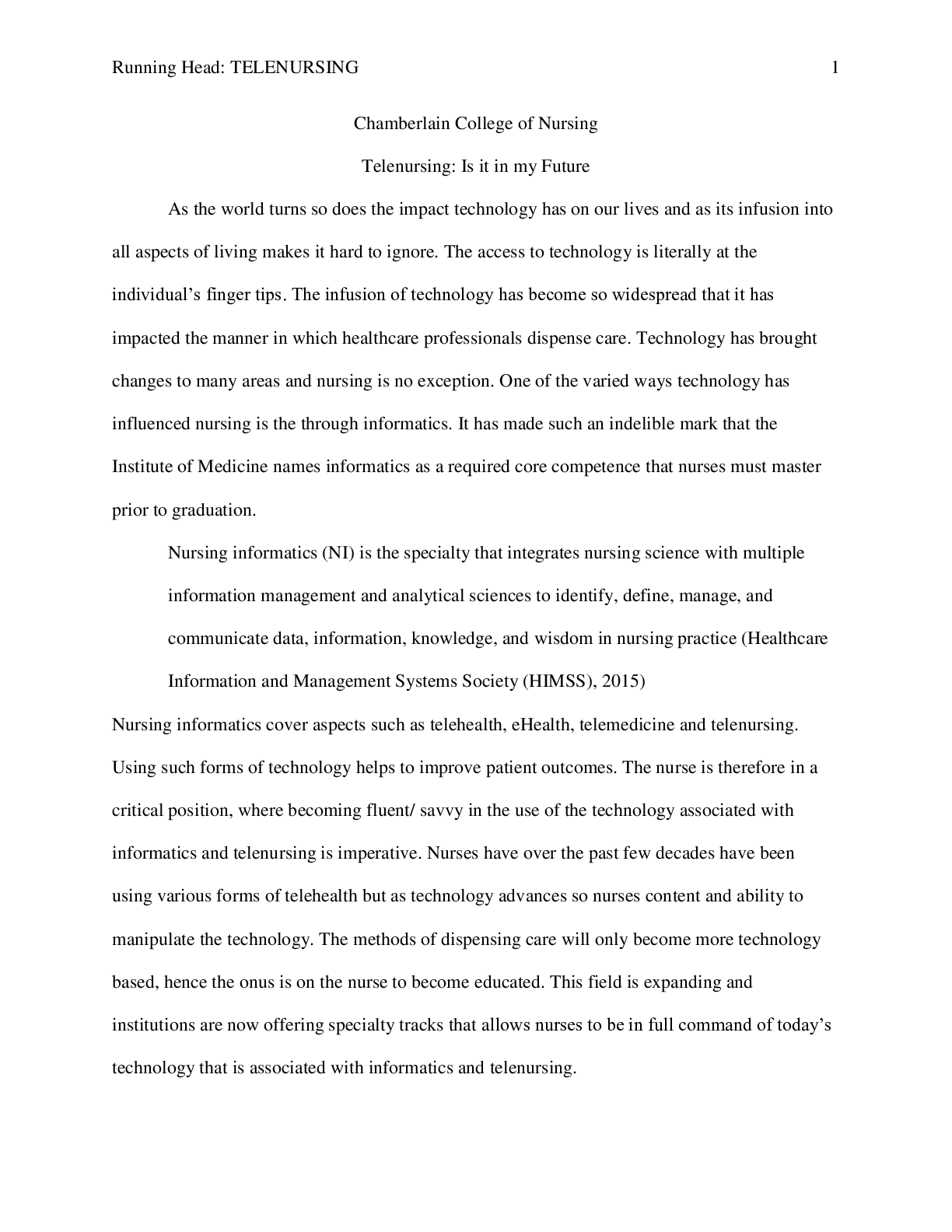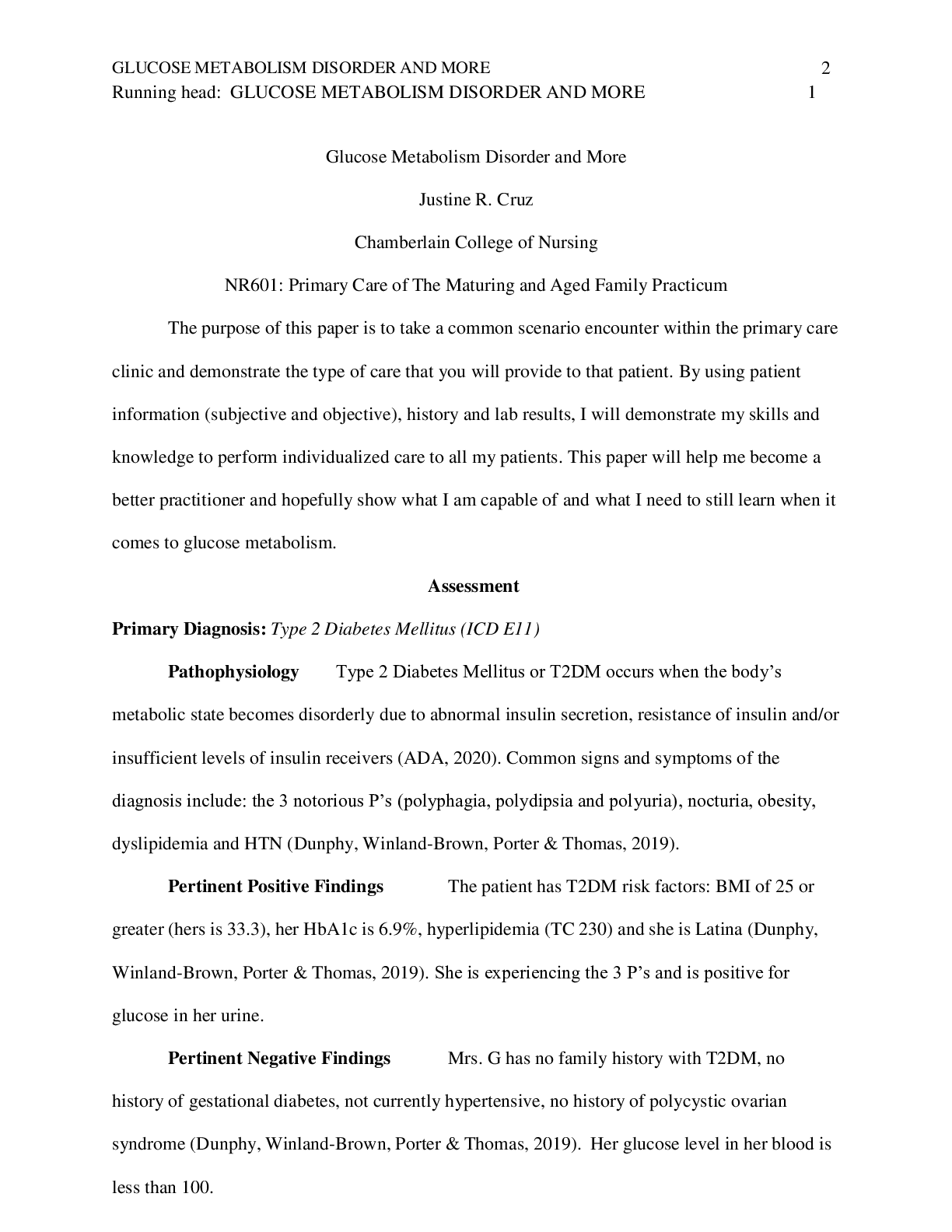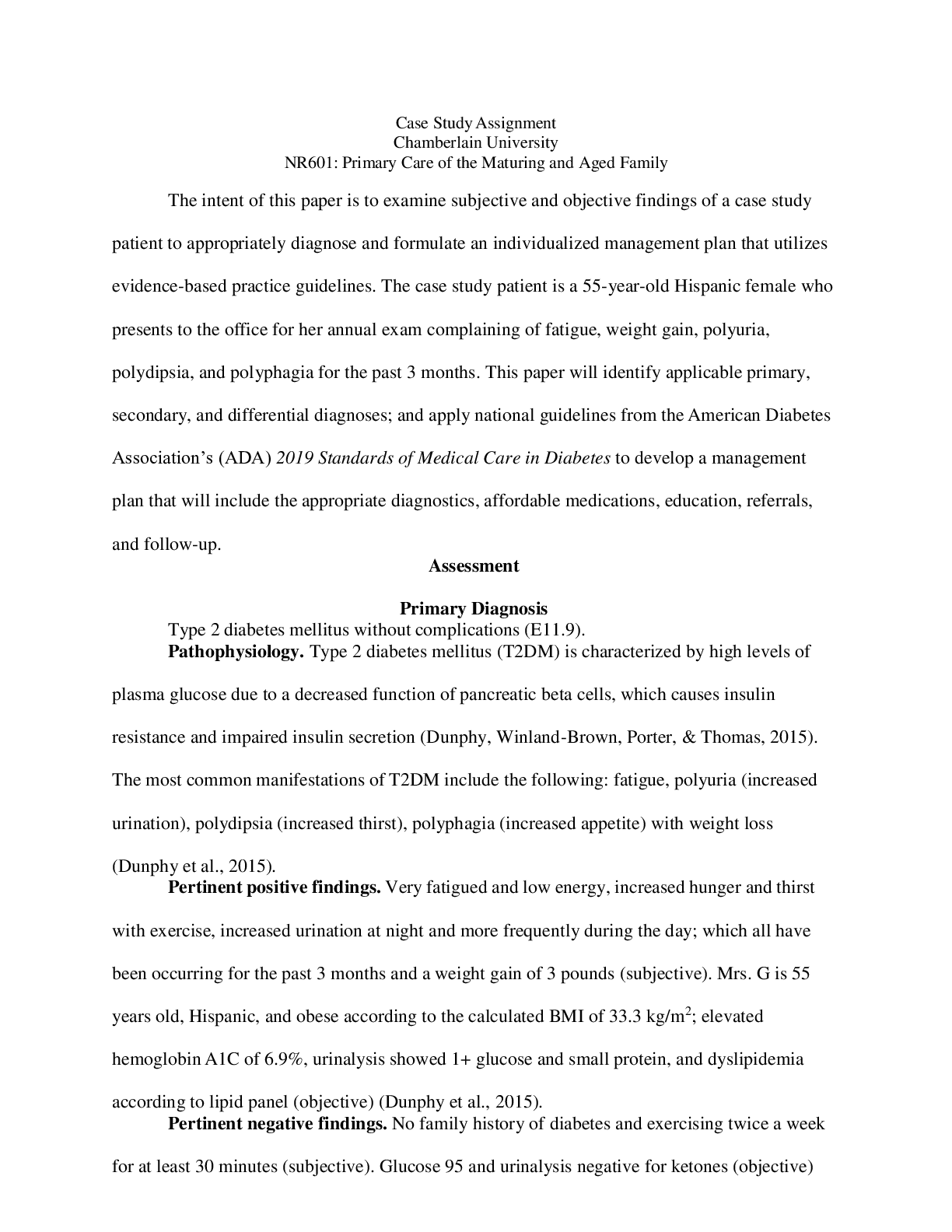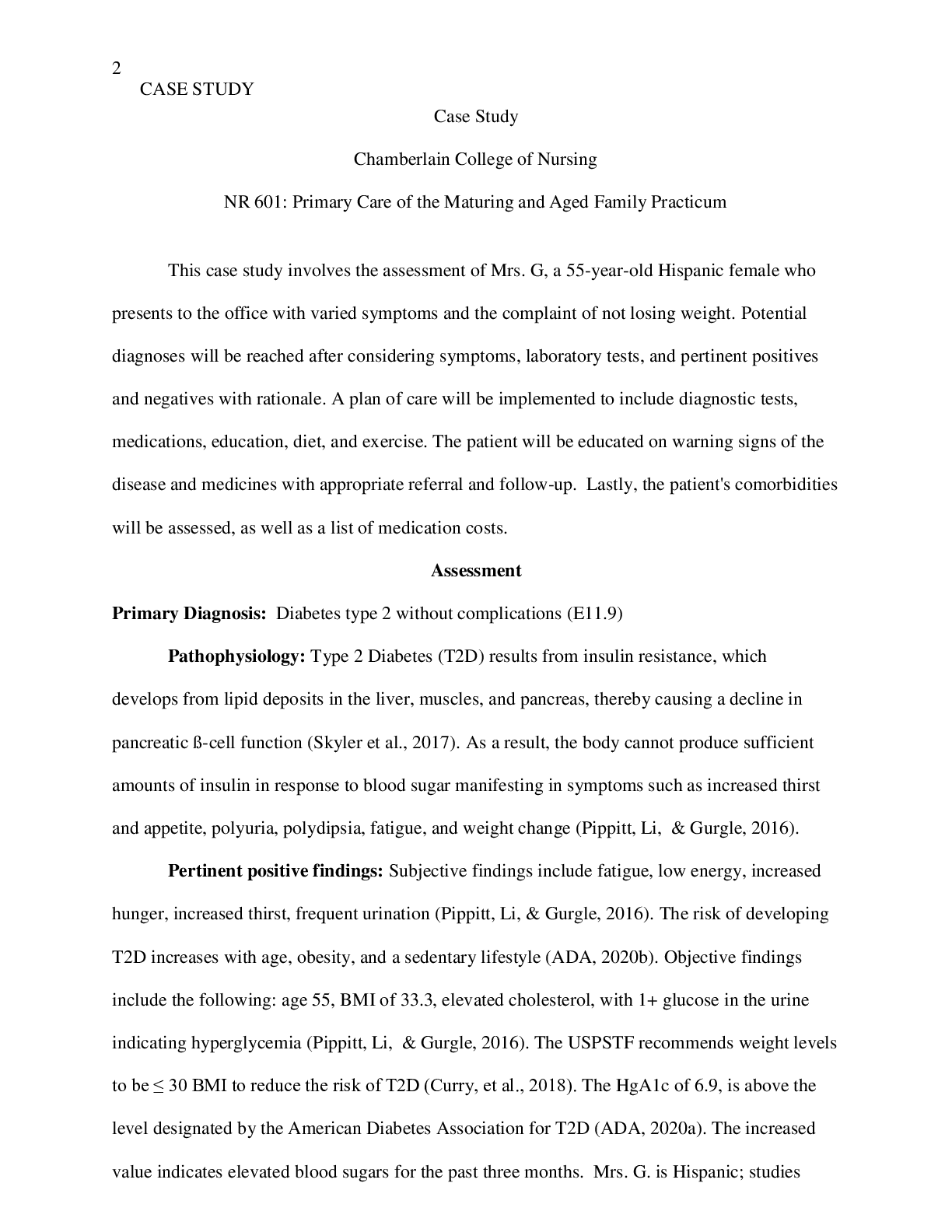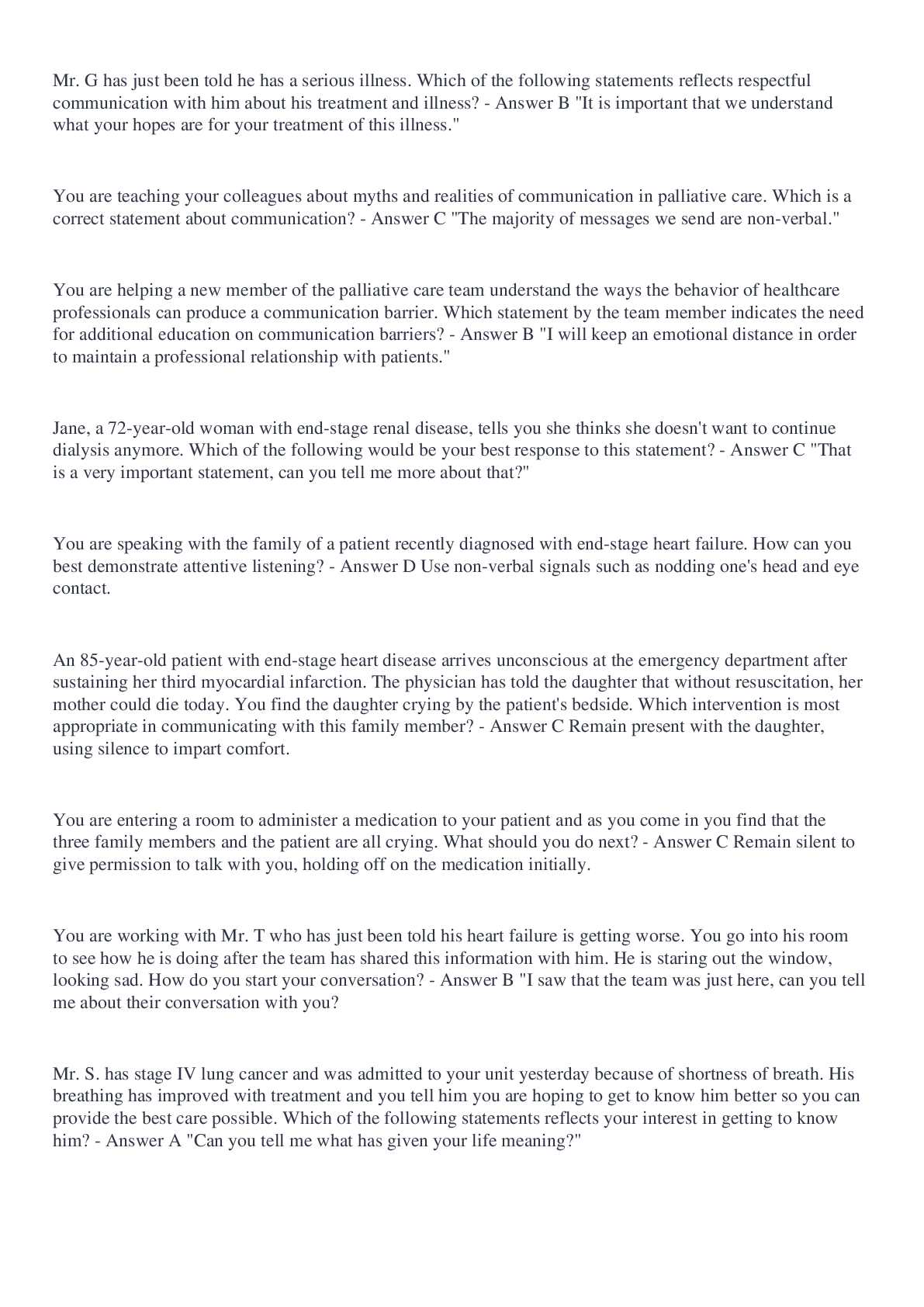Health Care > CASE STUDY > Mrs. W Case Study by Amie Seitz, Chamberlain College of Nursing, NR 601: Primary Diagnosis Diabetes (All)
Mrs. W Case Study by Amie Seitz, Chamberlain College of Nursing, NR 601: Primary Diagnosis Diabetes Mellitus Type 2(DM2) (E11.9)
Document Content and Description Below
Mrs. W Case Study Amie Seitz Chamberlain College of Nursing NR 601: Primary Care of the Maturing and Aged Family Practicum The following case study will follow Mrs. W, a 59-year old Asian fema... le who is coming into the office for a three-month follow-up of right knee arthritis. During the visit, she reports new complaints that for the past three months she has experienced fatigue and weight gain. Since the last visit, she has gained 4lbs, and she reports that she has had steady weight gain for four years, despite reporting regular exercise that includes walking 30 minutes a day at least twice a week and weight lifting. She noticed the weight gain after since menopause four years ago. This patient has an increased body mass index (BMI) of 30.7, based off a height of 5’1.5’’ and weight of 165lbs, otherwise she has unremarkable vital signs. The physical exam was routine, except corrective vision through the use of contact lenses. Upon review of this morning’s fasting labs, the fasting plasma glucose of 127, hemoglobin A1C of 6.6%, and lipid panel with an LDL of 144, triglycerides 229 were abnormal. Otherwise, all other lab work was in the normal range. She also left a urine sample for urinalysis that came back normal, except for 1+ glucose. This paper will review the subjective interview and objective examination of Mrs. W. to provide an appropriate assessment and plan for the primary diagnosis, the secondary diagnosis, and the differential diagnoses that will include: diagnostics needed, medications, education materials, potential beneficial referrals, and essential follow-up care. Furthermore, an evaluation of the cost of the planned prescribed and over-the-counter (OTC) medications will help to maintain compliance with planned care. Assessment Primary Diagnosis Diabetes Mellitus Type 2(DM2) (E11.9) Pathophysiology Type II, often referred to as adult-onset diabetes, can be the cause of both genetic and environmental factors as it comes from a lack of insulin production from the pancreas or from the bodies inability to properly use insulin to move glucose into the cells (American Diabetes Association, 2017). The increase in free glucose will cause signs and symptoms such as fatigue, excessive thirst, and frequent urination (Dunphy et al., 2015). [Show More]
Last updated: 2 years ago
Preview 1 out of 19 pages

Buy this document to get the full access instantly
Instant Download Access after purchase
Buy NowInstant download
We Accept:

Reviews( 0 )
$14.00
Can't find what you want? Try our AI powered Search
Document information
Connected school, study & course
About the document
Uploaded On
Jun 13, 2021
Number of pages
19
Written in
Additional information
This document has been written for:
Uploaded
Jun 13, 2021
Downloads
0
Views
76

 (A Graded) Latest Questions and Complete Solutions.png)
, Latest Questions and Answers with Explanations, All Correct Study Guide, Download to Score A.png)
 Pneumonia Chronic Obstructive Pulmonary Disease Clinical Reasoning Case Study Medical surgical (NUR 201) Pneumonia-COPD case study solutions.png)
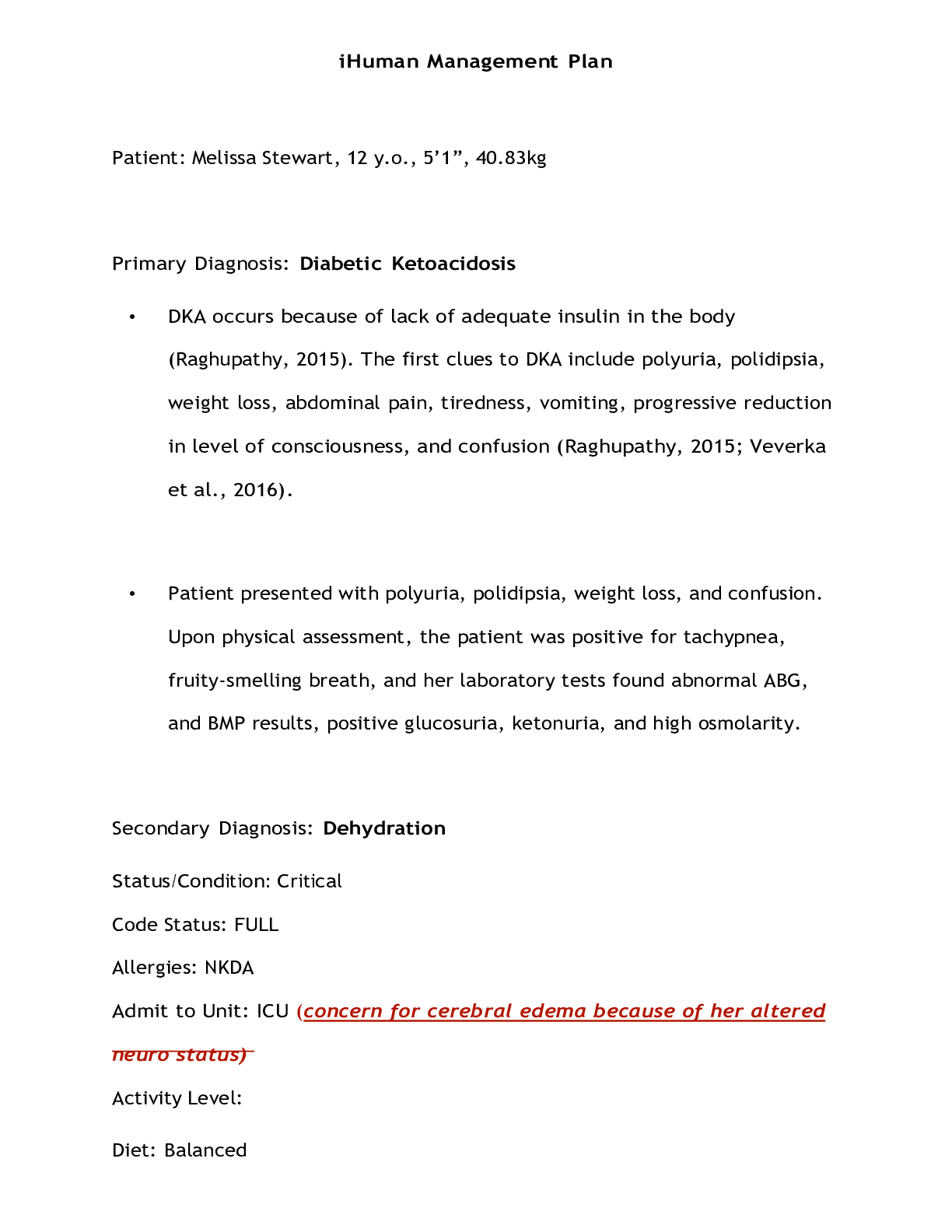


 – Chest Pain Complete Latest Solutions.png)

